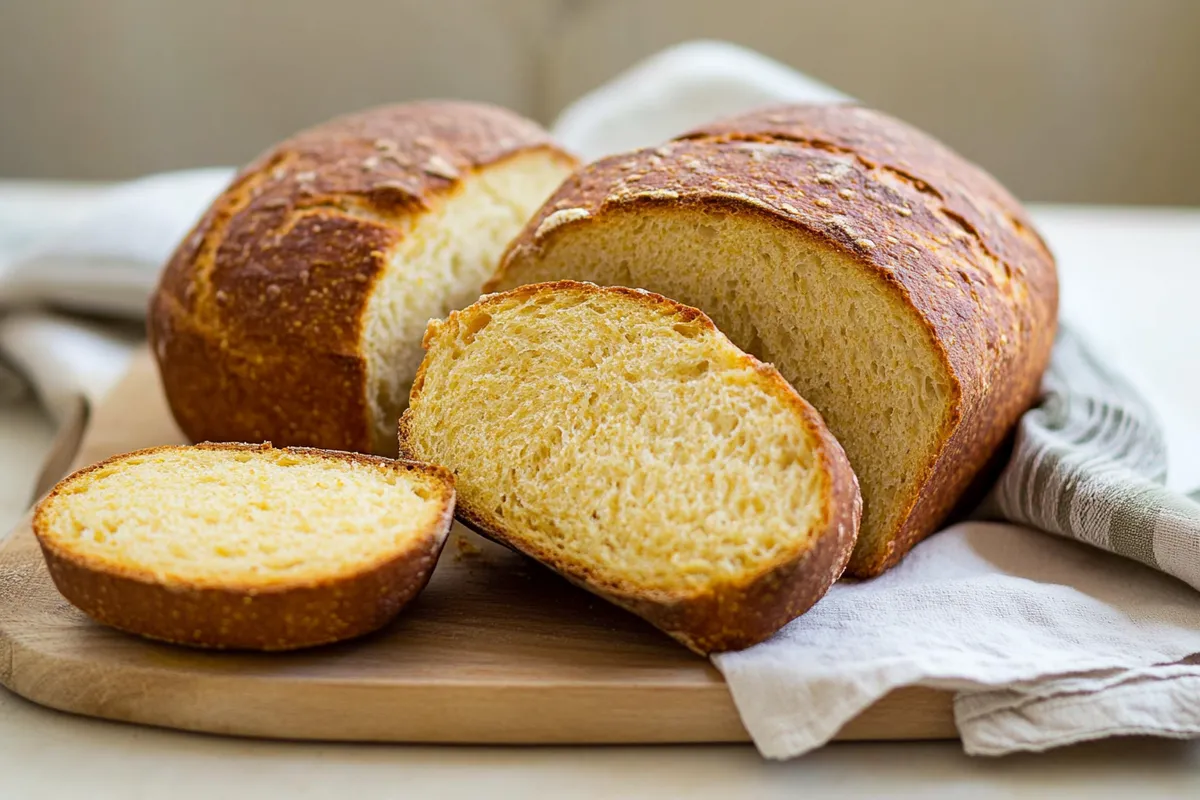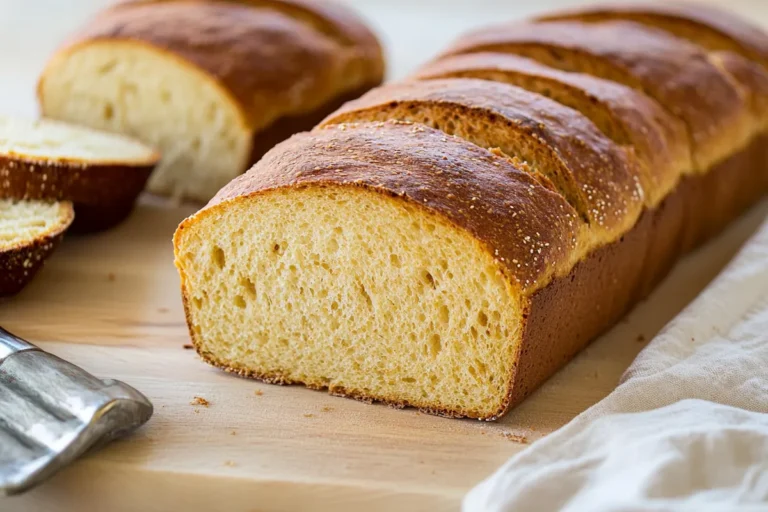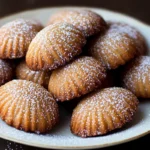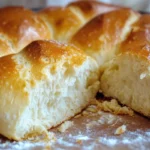Einkorn bread is a delightful twist on traditional bread-making that celebrates the unique flavors and nutritional benefits of this ancient grain. As the original form of cultivated wheat, einkorn offers a rich, nutty profile and contains more protein, vitamins, and minerals than modern wheat varieties. Whether you’re a seasoned baker or a curious beginner, crafting an einkorn bread recipe opens up a world of possibilities, from warm loaves perfect for toast to rustic rolls for dinner parties.
Experiment with variations by incorporating ingredients such as herbs, nuts, or dried fruits, which can elevate your bread experience. Don’t shy away from substituting ingredients to create gluten-free versions or experimenting with different flours for unique textures and flavors. For optimal results, keeping a close eye on hydration levels and resting times is key, as einkorn’s texture differs from all-purpose flour. Get ready to enjoy the delicious reward of your efforts and savor every bite of this wholesome, naturally nutritious bread!
Ingredients for einkorn bread recipe:
Basic Ingredients
- 3 cups (360g) einkorn flour: This ancient grain contains gluten and is rich in nutrients, giving your bread a unique flavor. You can find it in health food stores or online.
- 1 ¼ cups (300ml) warm water: Ideally heated to around 110°F (43°C) to activate the yeast.
- 2 teaspoons active dry yeast: Vital for fermentation, choose a good quality yeast for best results.
- 1 ½ teaspoons sea salt: This enhances flavor and controls yeast activity, ensuring a well-risen loaf.
- 1 tablespoon honey or maple syrup: This acts as a natural sweetener to feed the yeast, promoting a better rise.
Optional Ingredients for Added Flavor
- 2 tablespoons olive oil or melted butter: For a richer taste and softer crumb, you can add a fat source.
- 1 tablespoon herbs (rosemary, thyme, or oregano): Mixing in these herbs will enhance the aroma and flavor profile of your einkorn bread.
- 1 tablespoon mixed seeds (e.g., flaxseed, sunflower seeds): Add these seeds for texture and extra health benefits, as well as a delightful crunch.
- 1 teaspoon garlic powder or onion powder: Enhance the bread’s flavor profile, perfect for accompanying savory dishes.
Suggested Variations
- Whole Grain Variation: Substitute 1 cup of einkorn flour with whole wheat einkorn flour for a denser texture and even more fiber. This will provide a rustic bread experience.
- Sweet Variation: To create a sweet loaf, consider adding ½ cup dried fruits (like cranberries or raisins) and 1 teaspoon ground cinnamon, creating a delightful breakfast bread.
- Nutty Addition: Fold in ½ cup chopped nuts such as walnuts or pecans for a nutty flavor and crunchy texture.
These ingredients will work harmoniously to create a delicious loaf that is both nutritious and satisfying, perfect for any meal or snack. Enjoy customizing your einkorn bread recipe!

How to prepare einkorn bread recipe:
Step 1: Gather Ingredients
Collect the following ingredients: 3 cups of einkorn flour, 1 and ½ teaspoons of salt, 1 tablespoon of honey, 1 cup of warm water, and 1 teaspoon of active dry yeast. Ensure everything is fresh to achieve the best flavor.
Step 2: Activate the Yeast
In a small bowl, combine the warm water and honey. Sprinkle the yeast over the water and let it sit for about 5 to 10 minutes until frothy. This step ensures that the yeast is alive and active.
Mixing the Ingredients for Einkorn Bread
Step 3: Combine Dry Ingredients
In a large mixing bowl, whisk together the einkorn flour and salt. Make sure the salt is evenly distributed throughout the flour to prevent any adverse effects on yeast fermentation.
Step 4: Add Wet Ingredients
Pour the activated yeast mixture into the bowl with the flour and salt. Use a wooden spoon or spatula to stir these ingredients together until they form a shaggy dough.
Kneading and Rising
Step 5: Knead the Dough
Turn the dough onto a lightly floured surface. Knead the dough for about 8 to 10 minutes. You want a smooth, elastic texture. If the dough is too sticky, sprinkle in a bit more einkorn flour as you knead.
Step 6: First Rise
Shape the dough into a ball and place it in a greased bowl. Cover it with a clean kitchen towel. Let it rise in a warm area for 1 to 2 hours, or until it doubles in size.
Shaping and Baking the Bread
Step 7: Shape the Dough
Once the dough has doubled, gently deflate it. Transfer it back onto the lightly floured surface. Shape it into a loaf by folding the dough in thirds and rolling it tightly.
Step 8: Second Rise
Place the shaped loaf into a greased loaf pan. Cover it again with the kitchen towel and let it rise for about 30-45 minutes, or until it puffs up above the rim of the pan.
Step 9: Preheat the Oven
While the dough is rising, preheat your oven to 375°F (190°C). This ensures the oven is hot enough to provide a good rise during baking.
Step 10: Bake the Bread
Once the dough has risen, remove the towel and place the pan in the oven. Bake for 30 to 35 minutes or until the bread is golden brown and sounds hollow when tapped on the bottom.
Step 11: Cool the Bread
After baking, take the loaf out of the oven and let it cool in the pan for about 10 minutes. Then, remove it from the pan and transfer it to a wire rack to cool completely.
Tips for the Perfect Einkorn Bread Recipe
Making a delightful loaf of einkorn bread takes a bit of care. Focus on a few essential tips to enhance your baking experience and ensure great results every time.
Maintain the Right Temperature
Temperature plays a crucial role in bread-making. Always use room temperature ingredients, which usually range from 68°F to 72°F (20°C to 22°C). This applies to water, milk, and any other liquids. If your liquids are too cold, the yeast may struggle to activate. If they are too warm, you could kill the yeast. To check the temperature, use an instant-read thermometer. This little tool ensures you get it just right, making for a more successful rise.
Choose Quality Ingredients
Using high-quality ingredients is one of the best ways to elevate your einkorn bread recipe. Select fresh, organic einkorn flour for the most reliable outcomes. Fresh flour has more flavor and retains better nutritional value. Additionally, choose a good brand of salt. Sea salt or kosher salt is preferable for their mineral content and flavor-enhancing properties. Even the water matters! Use filtered or spring water for optimal flavor and health benefits.
Consider Suitable Substitutions
If needed, make substitutions that cater to dietary restrictions. For gluten sensitivity, consider blending einkorn flour with gluten-free flours like almond flour or coconut flour. Do note, however, that this may change the final texture. To make this recipe vegan, replace dairy products with their plant-based alternatives, such as almond milk or coconut yogurt. Be sure to check that your substitutes properly complement the dough’s elasticity and moisture.
Experiment with Additional Flavors
Feel free to add your unique twist to the fundamental einkorn bread recipe. Incorporate seeds, nuts, or dried fruits for added texture and depth of flavor. Sesame seeds or sunflower seeds can provide a satisfying crunch, while chopped walnuts can introduce a hearty flavor. Herbs like rosemary or thyme offer a robust, savory note. Always mix these additions carefully into the dry ingredients before blending in the liquids to ensure even distribution.
Practice Patience During Rising
Allow your dough ample time to rise. The high protein content in einkorn flour requires a longer fermentation time than conventional flours. Keep the dough in a warm place, away from drafts, to promote rising. A warm oven (turned off) or a sunny kitchen counter are great options. Be patient—when the dough doubles in size, it is ready to bake to perfection.
With these handy tips, creating the perfect loaf of einkorn bread will be a joy rather than a task. Enjoy your baking adventure!
Storage Tips for einkorn bread recipe:
After baking your delicious einkorn bread, proper storage is key to maintaining its freshness and flavor. By following these simple tips, you can enjoy your bread for days without sacrificing quality.
Cool the Bread Completely
Allow your einkorn bread to cool completely on a wire rack before storing. This step prevents condensation from forming inside the storage container, which can lead to soggy bread or mold growth.
Choose the Right Storage Method
For short-term storage, wrap your bread in a clean kitchen towel. A cloth allows the bread to breathe while still keeping it moist in a balanced way. If you plan to eat your bread within a week, this method works perfectly.
Use Sealed Containers for Longer Freshness
If you want to keep your einkorn bread fresh for a longer time, consider using an airtight container. Wrap the bread in plastic wrap or foil before placing it in the container. This protects it from air exposure, which can cause it to dry out.
Freezing for Extended Shelf Life
For even longer storage, freezing your einkorn bread is a great option. Slice the bread before freezing for convenience. Wrap each slice in plastic wrap and then place them in a freezer-safe bag. This strategy allows you to grab a slice whenever you want. Make sure to consume the frozen bread within three months for the best taste.
Thawing Bread Effectively
When you’re ready to enjoy your frozen einkorn bread, remove the desired number of slices from the freezer. Allow them to thaw at room temperature for about 30 minutes. If you prefer a warm slice, toast it directly from frozen. This method helps refresh the bread, bringing back some of its original texture and flavor.
Monitor for Freshness
Regularly check your stored bread for signs of spoilage. If you notice any unusual odors or mold, it’s best to discard the bread. By staying vigilant, you ensure that you always have fresh einkorn bread ready to enjoy.
By following these storage tips, you can maximize the lifespan and quality of your einkorn bread, allowing you to savor its flavor for days or weeks after baking!
Related Recipes to Enhance Your Einkorn Bread Experience
If you enjoy making einkorn bread, you might want to explore these complementary recipes. They not only pair well with the nutty flavor of einkorn but also share a focus on wholesome ingredients.
First, consider trying a rustic vegetable soup. This hearty dish boasts fresh vegetables and herbs, making it a perfect match for your bread. Dipping slices of einkorn bread into hot soup enhances the meal. The robustness of the soup complements the earthy tones of the bread, creating a satisfying combination.
Next, a classic herbed butter recipe can elevate your einkorn experience. Simply blend softened butter with a mix of fresh herbs like rosemary and thyme. Spread this flavorful butter onto warm slices of bread for a delightful treat. The rich taste of the butter harmonizes beautifully with the unique flavors of einkorn.
For a sweeter option, create a honey and cinnamon spread. Combine natural honey with a sprinkle of cinnamon for a simple yet delicious topping. This spread brings out the sweetness and adds an aromatic touch to your bread. Serve it with a cup of tea for a cozy afternoon snack.
Lastly, look into making an einkorn pizza dough. Using the same flour base, you can whip up a thin, crispy crust that works well for various toppings. The continuity in ingredients provides a delightful way to enjoy einkorn through different textures and flavors.
By exploring these related recipes, you can enhance your culinary repertoire while celebrating the unique qualities of einkorn flour.
Frequently Asked Questions:
What is einkorn bread, and how does it differ from regular bread?
Einkorn bread is made from one of the oldest cultivated forms of wheat, known as einkorn wheat. This ancient grain has a unique nutritional profile and is lower in gluten compared to modern wheat. This characteristic makes einkorn bread digestible for some individuals who may have sensitivities. Additionally, einkorn offers a slightly sweet, nutty flavor that sets it apart from regular bread made with refined wheat flours.
Can I substitute einkorn flour in my regular bread recipes?
Yes, you can substitute einkorn flour in many bread recipes, but you may need to adjust the liquid content and the rising times. Due to its different gluten structure, einkorn flour absorbs liquids differently, so it’s important to experiment with the ratios to achieve the perfect dough consistency. Many bakers recommend starting with a 25% substitution if you’re trying einkorn for the first time.
Is baking with einkorn flour suitable for beginners?
Baking with einkorn flour can be suitable for beginners, though it may require some adjustment and experimentation. Its unique properties can lead to different results, so having patience and testing various ratios of flour to liquid is key. With practice, you can master delicious baked goods that feature this ancient grain.
Does einkorn bread have any health benefits?
Einkorn bread is packed with nutrients, including higher protein content and essential fatty acids compared to common wheat. It also includes vitamins and minerals such as zinc, magnesium, and B vitamins, which can contribute to better overall health. Many people find that they feel less bloated when consuming einkorn compared to modern wheat.
How should I store homemade einkorn bread?
To keep your homemade einkorn bread fresh, store it in a cool, dry place. A bread box or a cloth bag can help maintain its softness and prevent it from drying out. For longer storage, you may freeze slices of bread and then toast them directly from the freezer whenever you crave a piece.
Can I make einkorn bread in a bread machine?
Yes, many bread machines accommodate einkorn bread. When using a bread machine, you should follow specific instructions regarding the liquid to flour ratio and setting adjustments. It’s best to refer to your machine’s manual or experiment with the settings to optimize your results with this particular flour.
Conclusion:
The einkorn bread recipe showcases the beauty of simplicity, allowing bakers of all skill levels to create delicious, nutritious bread at home. With its unique nutty flavor and dense texture, einkorn flour brings a delightful twist to traditional bread-making.
This flexible recipe offers various customization options, inviting you to experiment with additional ingredients like seeds, herbs, or dried fruits to tailor each loaf to your taste preferences.
Remember, the key to successful baking lies in patience and practice. Don’t hesitate to adjust rise times or hydration levels as you gain confidence. By embracing the versatility of einkorn flour, you can adapt this recipe to suit your lifestyle, making it a wonderful addition to your culinary repertoire.
Enjoy the rewarding process of making homemade bread, and relish the health benefits that come with using this ancient grain!



